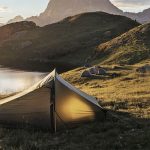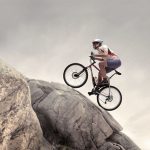With two weeks still left in February, avalanche fatalities in the U.S. were approaching the winter of 2001-2002, the record for the modern era. The rising death count is renewing concerns over whether the outdoor industry is doing enough avalanche training on the one hand, or whether that training and a growing array of safety equipment is merely luring backcountry adventurers into a false sense of confidence.
As of the first week of February and through Friday, the number of fatalities had already reached 30 in the U.S. and 11 in Canada for a total of 41. That's the highest total since 2002-03, when fatalities hit 58 and the highest U.S. fatality level since 2001-2002, when 35 succumbed to avalanches nationwide, according to avalanche.org, which compiles fatality statistics from regional avalanche centers across the continent. Six of the deaths in the record 2001-02 season did not come until February, while another 18 came in March.
Dale Atkins, who ran the Colorado Avalanche Center for 20 years and now runs avalanche safety training programs and analyzes avalanche data for Recco, said this winter is shaping up as unusual. Sweden-based Recco makes avalanche rescue systems that enable ski patrols at more than 350 ski areas worldwide to locate avalanche victims by detecting reflectors embedded in skiers clothing or equipment. The system is designed to enhance the chances of team rescues and is meant to complement companion rescue equipment like transceivers, probes and shovels.
“We are certainly flirting with records,” Atkins said of both fatalities and snowfall. “We are seeing big avalanches and we are seeing them in unusual places.”
The snow pack is anywhere from 120% to 220% of average throughout much of Utah and Colorado.
While 17 of this year's fatalities involve snowmobilers, skiers and snowboarders account for 15 and hikers, climbers and snowshoers account for the rest.
“We are seeing a lot of people with avalanche awareness getting in trouble, getting killed this winter,” said Atkins, referring to incidents involving off-duty ski patrol workers in California and some “very savvy people” in Colorado, Utah and Washington.
“What we are finding is that people's avalanche training awareness and skills tend to lag behind their sport skills, said Atkins.”
He said that, ironically, the proliferation of modern search and rescue gear may be contributing to the problem. “It has gotten so much better in the last ten years that someone with a little athleticism and daring could tackle slopes that people ten years ago would not have dreamed of attempting until they had many more miles under their belt.”
Atkins said the same dynamic has been at work for decades in aviation, medicine and transportation, where people with higher education and training tend to take more risk.
For instance, people have been shown to drive more aggressively if they know they have ABS brakes or after lighting improvements are made on roadways.
“It can lead to false confidence and we are seeing that,” Atkins said of the dramatic improvement to avalanche safety gear and training. “In a number of these accidents, they had the gear and did text book rescues, but it did not matter. Even though they had people out in 5 to 10 minutes, it was still too late.”
The good news is that climbers have declined as a percentage of fatalities from 20% in the 1980s to less than 10% now. The bad news is snowmobilers have risen from 6% in the 1980s to a third to a half in the 2000s.
Atkins said the problem is that this winter is presenting conditions that occur once every 20 to 30 years; far different than what most young backcountry enthusiasts have experienced.
“They may think they are very experienced, but in dealing with nature their experience is pretty low,” he said. “The good news is that actual chances of someone encountering an avalanche in the backcountry are pretty slim. However the consequences of that encounter are great. This is an important winter to learn about avalanches, to invest in rescue gear and learn how to use it. But travel as if you forgot it at home. If you are unsure hire a guide and go to a local ski area because conditions are fantastic.”















